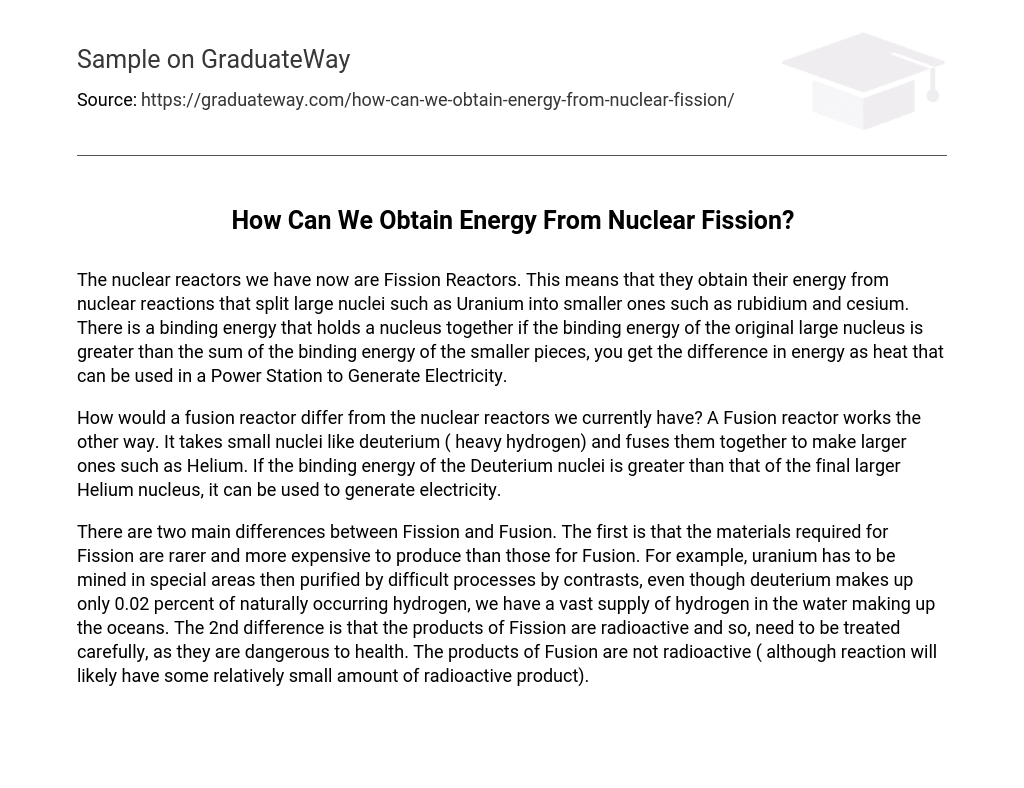The nuclear reactors we have now are Fission Reactors. This means that they obtain their energy from nuclear reactions that split large nuclei such as Uranium into smaller ones such as rubidium and cesium. There is a binding energy that holds a nucleus together if the binding energy of the original large nucleus is greater than the sum of the binding energy of the smaller pieces, you get the difference in energy as heat that can be used in a Power Station to Generate Electricity.
How would a fusion reactor differ from the nuclear reactors we currently have? A Fusion reactor works the other way. It takes small nuclei like deuterium ( heavy hydrogen) and fuses them together to make larger ones such as Helium. If the binding energy of the Deuterium nuclei is greater than that of the final larger Helium nucleus, it can be used to generate electricity.
There are two main differences between Fission and Fusion. The first is that the materials required for Fission are rarer and more expensive to produce than those for Fusion. For example, uranium has to be mined in special areas then purified by difficult processes by contrasts, even though deuterium makes up only 0.02 percent of naturally occurring hydrogen, we have a vast supply of hydrogen in the water making up the oceans. The 2nd difference is that the products of Fission are radioactive and so, need to be treated carefully, as they are dangerous to health. The products of Fusion are not radioactive ( although reaction will likely have some relatively small amount of radioactive product).





